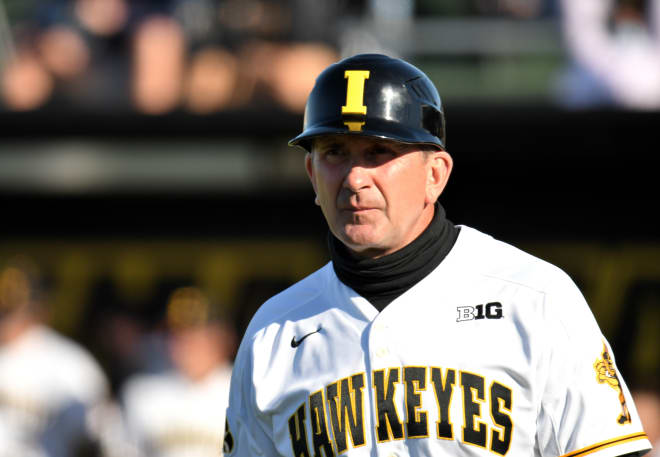Making the NCAA case for the Hawkeyes

The Iowa Hawkeyes season had its ups and downs, but they put together a successful season, in which they competed against a conference-only schedule. 44 games against your own conference opponents is a grind no matter the competition level and should be viewed as such.
While the projections don’t necessarily agree that the Big Ten deserves four or five bids to the NCAA Tournament, I would argue that the conference was much better than what was projected preseason.
Nebraska won the conference, going 32-11, while not even making an appearance in the preseason Big Ten top 6 rankings.
Michigan, who made the College World Series final in the last full season, finished in third place.
Indiana is ranked fourth in the country in team ERA, and they finished in a tie with Iowa for fourth place.
Teams like Illinois, Ohio State, Rutgers, Northwestern and Penn State consistently took a game from the top teams in the conference, while Rutgers even swept Nebraska. Ohio State swept Indiana.
Illinois went 3-3 vs Michigan on the season and took the series vs Iowa. Coach Heller stressed from the beginning that the Big Ten was far better than they got credit for, and I believe the conference has five or six tournament level teams.
Coach Heller pulled out recent NCAA Tournament statistics when making his case after the game today.
“Our league has averaged 4.5 teams in the tournament the last five years, and I don’t believe it should be any different this year.”
As for the Hawkeyes going into tomorrow’s selection show, it is time to lay out the case for them to be in the field of 64. Throughout the season, D1Baseball mentioned that the Big Ten could not be compared to other conferences RPI wise, due to not playing out of conference games. D1Baseball and Baseball America consistently had four teams in their projected field, leading me to believe that the top four teams would earn an at-large bid.
As the season has finished up, the projections have tightened on the Big Ten and the most recent brackets show the Big Ten getting three bids, including Nebraska, who won the automatic qualifying spot, as conference champion. Maryland got hot down the stretch and jumped from fifth to second in the standings, cementing themselves as an at-large team.
So that means it comes down to Michigan (27-17), Iowa (26-18) and Indiana (26-18) for what is perceived as the final spot in the field of 64 from the Big Ten.
“We’re playing great baseball and I believe we’re an NCAA Regional team. I believe we’re deserving,” said Coach Heller.
Comparing the Hawkeyes to Michigan, the Wolverines took three of four from Iowa to open the season in Texas, but it is very important to note that the Hawkeyes had just come off of a 10-day Covid pause. Michigan won ten games vs teams in the top 6 of the Big Ten standings, while Iowa won nine. However, Iowa sits at #80 in the RPI, while Michigan is at #91. You are allowed to compare RPIs within the conference because no one played any non-conference games. The strength of schedule for Iowa sits at #108, while Michigan sits at #143. Even though the Wolverines won the series to open the season, there are a couple of figures that can be used to argue Iowa over Michigan.
Comparing Iowa to Indiana, the Hoosiers took two out of three from Iowa, in Bloomington. However, the big thing working against Indiana is how they finished the season. The Hoosiers went 3-8 down the stretch to fall to 26-18 and if baseball is anything like basketball, the committee does not like teams who fell apart late in the year. Indiana has six wins vs the Big Ten top 6 vs Iowa’s nine and the Hoosiers RPI sits at #106, which is far lower than Iowa at #80. Looking at strength of schedule, the Hawkeyes hold a sizable advantage there as well. Indiana sits at #172, while Iowa is at #108.
While, Iowa may not have won head-to-head series vs Indiana or Michigan, the figures show that the Hawkeyes likely have a better resume, when you put together 44 games of data points. Whether the committee cares to dig into this or not will be the deciding factor.
The last thing to mention is teams from the SEC and ACC that are projected to make the field, while posting less than stellar conference records. North Carolina (27-25), Alabama (31-24) and LSU (34-22) are all in the projected field, while going combined 43-52 against their conference slate. How did they get above .500 records? Midweek games against poor competition. Racking up win’s vs UTSA, Youngstown State, New Orleans, Stetson, UT-Martin, UL Monroe, UNC Greensboro and James Madison is what will likely get those teams into the field. LSU in particular went 13-17 in SEC play and then went 21-5 in non-conference, while playing two non-conference games against ranked teams. How those teams are projected in the field over Big Ten teams who are 26-18 against an all-conference slate is beyond my level of comprehension.
Coach Heller expressed the strength of Iowa’s resume, as it compares to other teams around the country saying, “26 wins in the Big Ten is a big deal. Six wins against the top three teams and nine straight Friday victories. Not many have done that.”
Whether the committee wants to look at the things I laid out above, is something we will get the answer to very soon, but in my opinion the Big Ten should be getting five teams into the field of 64.